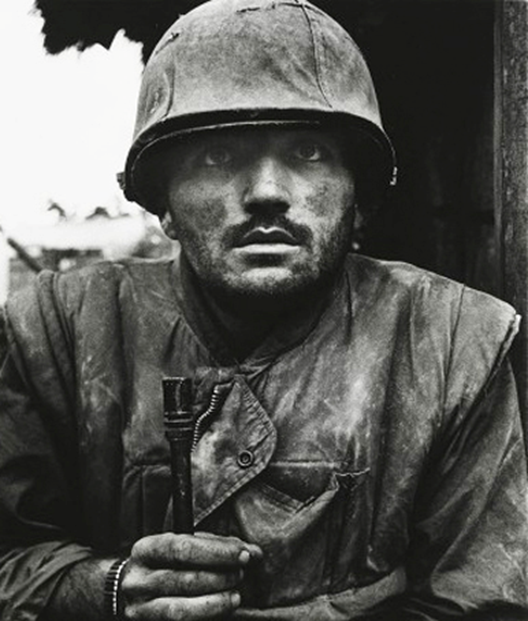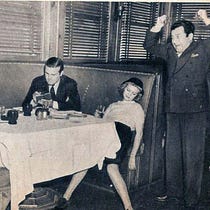You have 2 free member-only stories left this month.
The Cold Stare Of A Russian Soldier Who Survived A Brutal War In Ukraine
Evgeny Stepanovich Kobytev and the Thousand-Yard Stare

The two photographs above are photographs of one man from two different times. The photo on the left showed a healthy face looking at you, the other on the right showed a thinner, tired-looking face plastered with wrinkles, and this face wasn’t just looking at you. It appeared to be looking through you.
The man in the photograph was an artist named Evgeny Stepanovich Kobytev. The two photographs above were displayed in the Andrei Pozdeev museum.
The photograph on the left shows the day before Kobytev left to fight the German forces in 1941, and on the right, showed the day he returned from a four-year War in 1945.
The photograph on the right was The Human Face after witnessing 4-years of a No-rule war on the Eastern front.
Born on the 25th of December 1910, in the village of Altai, in the Southern part of Russia, Evgeny Stepanovich Kobytev graduated from a pedagogical school and then worked as a teacher in the rural areas of Krasnoyarsk. His passion was painting, especially portraits and panoramas from daily life.
In 1936, he began studying at the Kyiv State Art Institute in Ukraine. He graduated with honors from the art institute in 1941 and was ready to go on his artistic journey.
But unfortunately, on the 22nd of June that same year, Nazi Germany attacked the Soviet Union. This halted his artistic dreams. He eventually volunteered to become a soldier and enlisted in one of the artillery regiments of the Red Army. The regiment was engaged in a fierce battle to protect the small town of Pripyat, which lies between Kyiv and Kharkiv.
Kobytev was injured in the leg in the month of September 1941. He was eventually captured and became a prisoner of war. Kobytev was taken to a notorious concentration camp operated out of Khorol, which was called the “Khorol pit”. it is said that approximately ninety thousand prisoners of war and civilians died in that camp.
Built on the grounds of what used to be a brick factory, the Khorol camp had only one barrack; it was half-rotten and rested on posts that were leaning to one side. It was the only shelter from the autumn rains and storms. While few of the sixty thousand prisoners brought to the camp managed to cram themselves in there, the rest were left exposed to the harsh weather.
In the barrack, people stood pressed tightly against each other. They were gasping from the stench and the vapors and were drenched with sweat.
Two years later, Kobytev managed to escape from captivity and again rejoined the Red Army. He took part in military operations in Ukraine, Moldova, Poland, and Germany.
After the war ended, he was awarded the Hero of Soviet Union medal for his excellent military service during the battles for the liberation of Smila and Korsun in Ukraine. Due to the fact that his military career was “spoiled” for being a prisoner of war, the High Command refused to award him the victory over Germany medal.
Years later Kobytev was elected as a deputy of his city council and was in charge of the cultural activities of the region.
He later died in 1973.
The Thousand-Yard Stare

The phrase above is often used to describe the blank, unfocused gaze of combatants who have become emotionally detached from the horrors around them; War. It is the tell-tale sign that one’s senses have become overloaded by prolonged fear and trauma that the nervous system can’t process anymore.
When a war-weary or traumatized soldier like Evgeny Stepanovich Kobytev stares at you, it’s like he is looking through you, but not in the X-ray kind of way.
The phrase had been called a lot of names over the years; Shell shock, combat fatigue, battle fatigue, and post-traumatic stress disorder (PTSD). A person with PTSD might drift out of a conversation and appear distant and withdrawn. This is known among soldiers as the “Thousand-yard stare.”
The British photographer Don McCullin explains it better in 1968 with a photograph he took of an unknown American marine during the battle for the city of Hue during the Vietnam war. He noticed the marine sitting motionless while holding his gun. The photographer approached him carefully and instinctively brought up his camera to take numerous shots. In that process, he noticed that the soldier’s expression did not change. He did not as much as blink.

The subject appears to be looking at something else as the photographer takes pictures of him. His expression looks cold and withdrawn. He has seen, heard, and felt too much on that day to the point his brain began to feel numb, as it starts to shut down. All the soldier could do is stare perhaps at the horrors in front of him.
Conclusion
I can’t imagine the level of terror soldiers face during war.
No matter the battles they go through or the uniforms they wear or whose side they are fighting for, they are humans too.
It is very sad that the men and women who go out to fight and return alive, come back totally different persons.
Not only do they change, but some if not all of them also come back home with another battle they’ll have to go through probably for the rest of their lives. Mental battle.
Reference:
Lessons from History is a platform for writers who share ideas and inspirational stories from world history. The objective is to promote history on Medium and demonstrate the value of historical writing.
Share your ideas with millions of readers.
Recommended from Medium
Continue to Medium
Click “Sign Up” to agree to Medium’s Terms of Service and acknowledge that Medium’s Privacy Policy applies to you.








